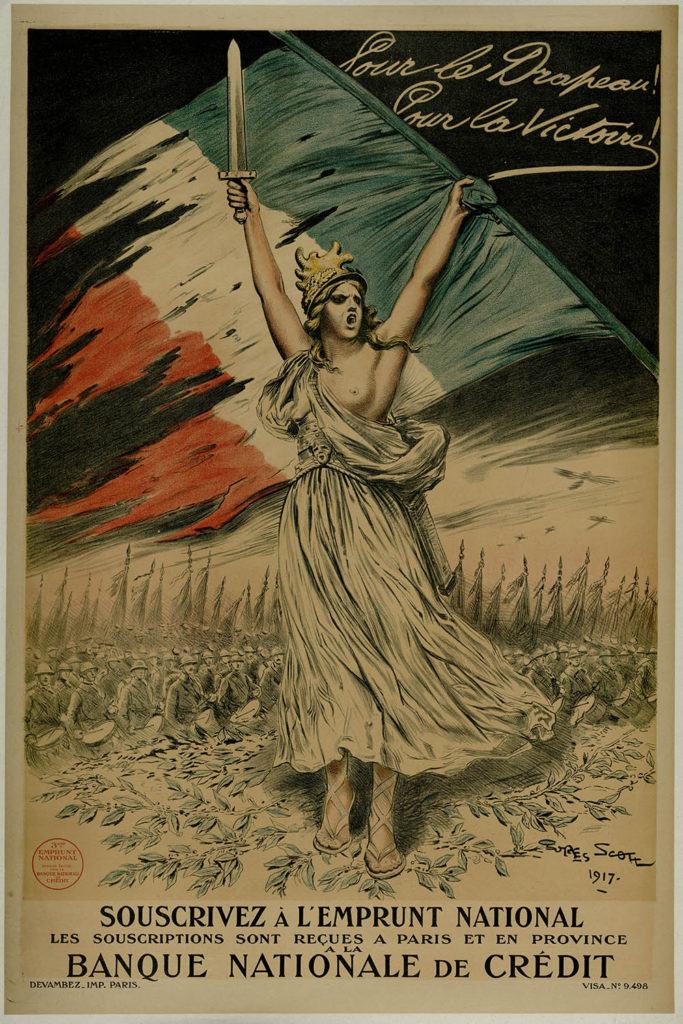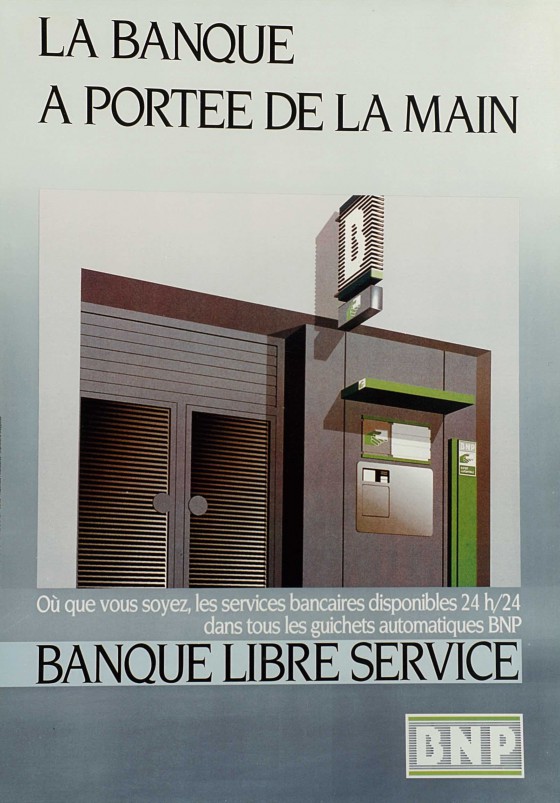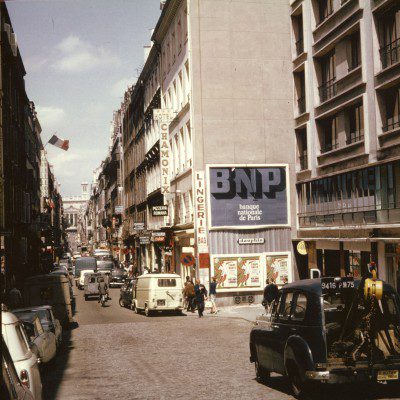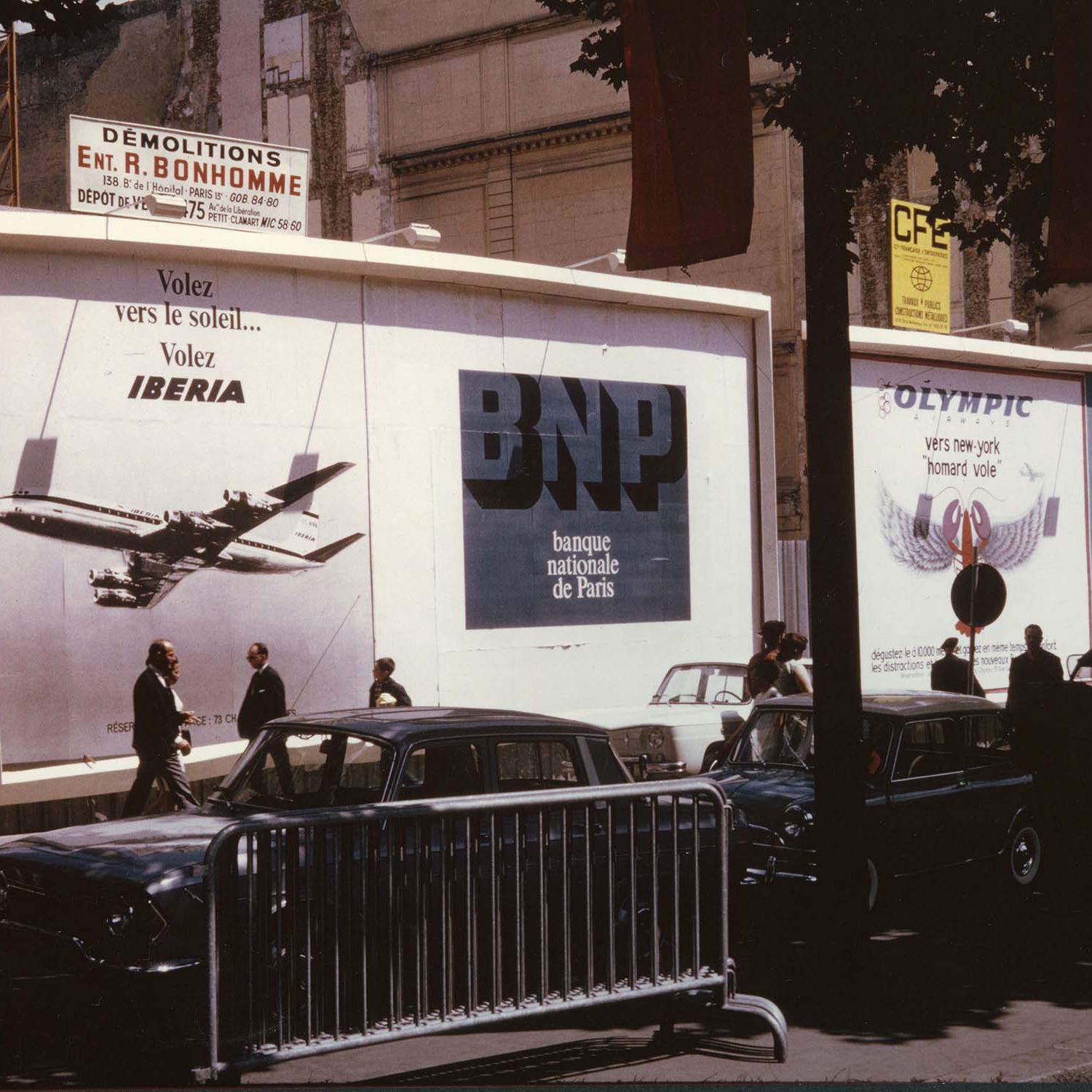Banks top the bill

Preferring discretion and a low profile, banks took their time before beginning to use advertising posters. It was the propaganda requirements during the First World War followed by the democratisation of banking which led to posters becoming an essential and lasting vector in their advertising communication.
Accompanying the Industrial Revolution and urban development, the poster developed in a spectacular fashion throughout the 19th century. Jules Chéret gave it respectability and a number of painters including Alphonse Mucha and Toulouse-Lautrec increased its prestige. The French law of 1881 concerning the freedom of the press regulated the display of advertisements, giving posters new spaces for display.
The illustrated poster goes to war
However, in banking circles, it was frowned upon to display your products and services too conspicuously: the windows just displayed advertisements, often in black and white and, for the most part, text only. But the First World War would change all that. Banks contributed to the war effort and understood that the poster was an effective and fast means of propaganda expression. The four national war loans between1915 and 1918 saw posters, illustrated by artists, enter the banks and take up position on the walls in the branches. And they have not come down since. At that time, the Comptoir national d’escompte de Paris was publishing numerous posters and even staged a spectacular operation: in just two weeks, it produced a huge poster (6m x 4m) that was put up on display on the front of its building at number 2 avenue de l’Opéra. It was a drawing by Auguste Leroux enlarged five times representing two young women in costumes from Alsace and Lorraine. Under a 17-metre-long banner proclaiming “Pour hâter la Victoire et pour nous revoir bientôt, Souscrivez !” (to hasten Victory and see us again soon, Subscribe!), the height of the poster covered two floors of the building.

Picture of Georges Bertin Scott de Pagnolle – BNP Paribas Historical Collections
The strength of the slogan and the image
After the war, along with advertising inserts in the press and tracts, the illustrated poster showed itself to be suited to the movement towards bank democratisation. It revealed itself as a medium that could address a wide audience using symbolic images and striking slogans. Alongside the “new media” including annual reports, revues and brochures, posters have always accompanied the development of the bank and its products. Photographs, initially in black and white and then in colour, appeared. And even when the first TV ads where appearing in the early 1960s, and even during the proliferation of information display screens in the banks, the poster still retained its appeal and persuasive strength. In 2014, BNP Paribas launched a competition, repeated again in 2015, for business customers: the winners are entitled to display their advertising… in poster format for one month in the branches of the Group!









